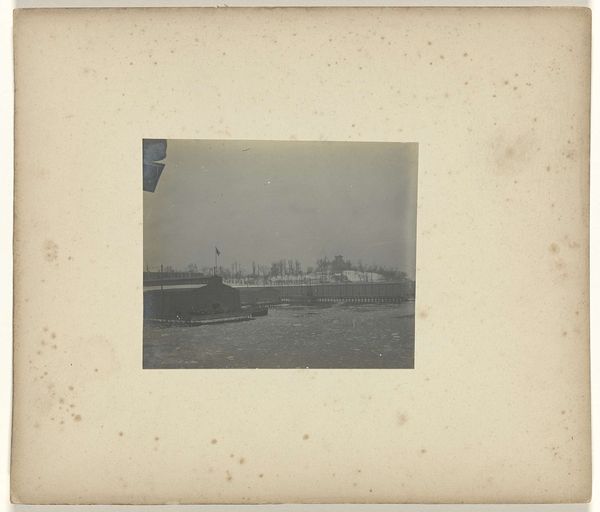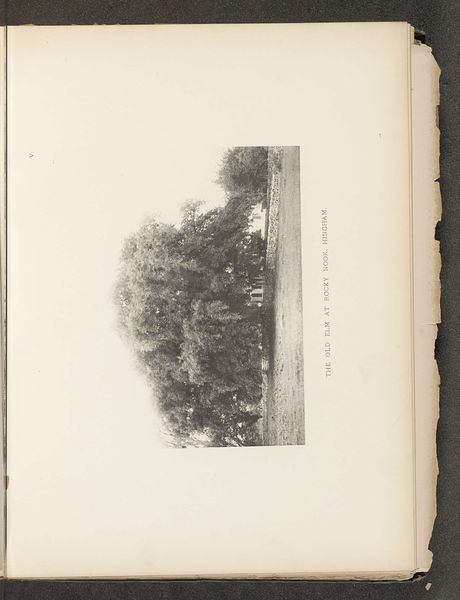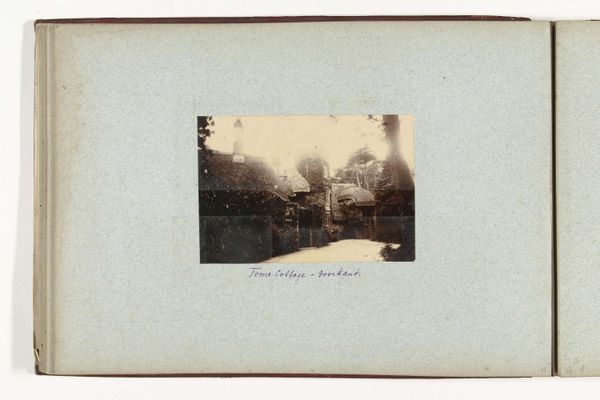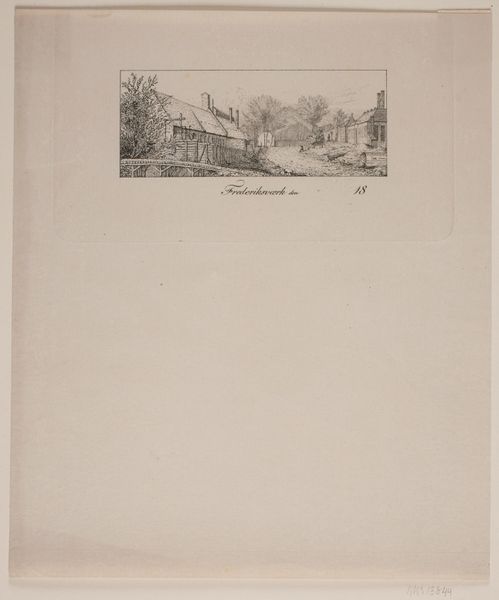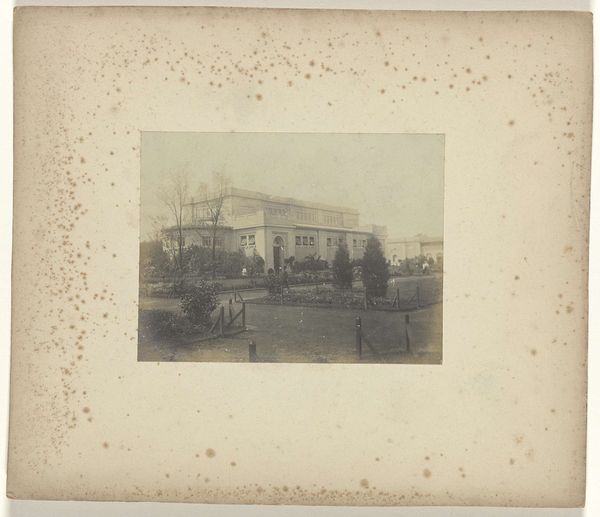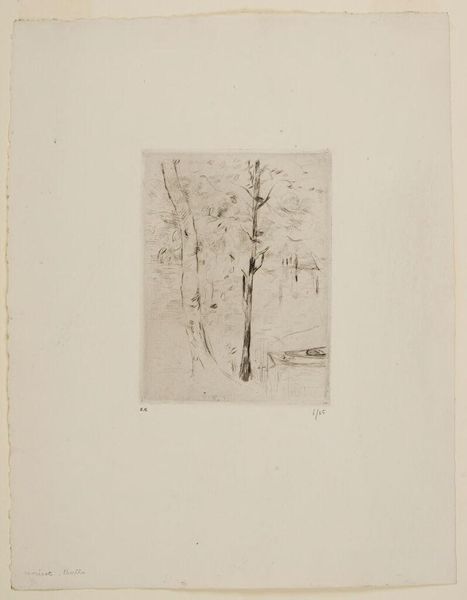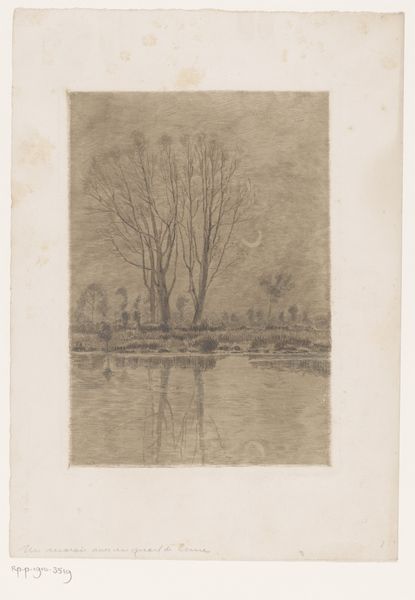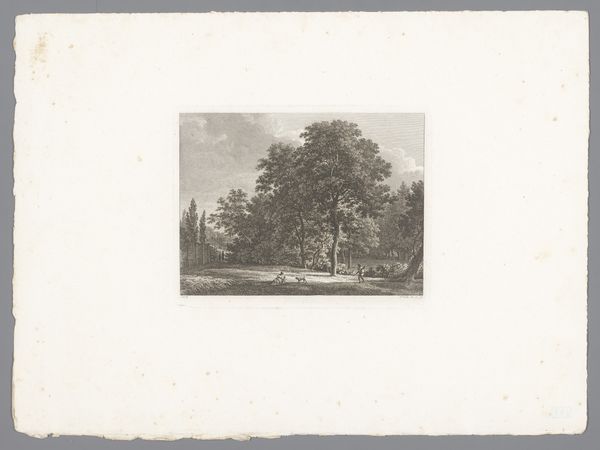
Uitzicht uit het raam van het huis/hotel waar Jan C. Schüller verbleef tijdens de wereldtentoonstelling in St. Louis (Louisiana Purchase Exposition), 1904 Possibly 1905
0:00
0:00
janschuller
Rijksmuseum
photography
#
landscape
#
photography
#
orientalism
#
cityscape
Dimensions: height 106 mm, width 81 mm
Copyright: Rijks Museum: Open Domain
Curator: Jan Schüller’s photography, specifically "Uitzicht uit het raam van het huis/hotel waar Jan C. Schüller verbleef tijdens de wereldtentoonstelling in St. Louis (Louisiana Purchase Exposition), 1904," captures a moment suspended in time. It is likely dated circa 1905 and resides here at the Rijksmuseum. What are your initial thoughts? Editor: A stark, wintry atmosphere. The bare tree and muted tones give it a melancholic, almost desolate feel. The way the buildings fade into the background also makes the urban setting seem quite lonely. Curator: Indeed. Note the composition. Schüller frames the cityscape with the stark verticals of the trees, one seemingly a bare sapling leaning left. This division emphasizes depth and recession, pulling the eye towards the blurred background. There is almost a subtle use of the golden ratio. Editor: Looking at the foreground and the overall photographic process, I'm drawn to the materiality. How might the photographic emulsion and printing methods of the era—possibly involving gelatin silver or similar processes—influence the tonal range and visual texture we see here? I’m considering how much of this look comes from what materials were easily available and most widely in use in that moment. Curator: Certainly, the technology shaped the artistic choice, although I contend the composition, the contrast between the foreground elements and distant buildings, presents a clear intentionality, shaping how we perceive reality within the photographic frame. Look at how he directs attention and meaning, creating spatial relationships between planes. Editor: That being said, consider the implications of photographing this view at the time of the Louisiana Purchase Exposition. How did the production and consumption of imagery like this support, challenge, or reflect upon ideas of progress and imperial expansion? Curator: I appreciate the question. It prompts us to look beyond mere aesthetic appreciation towards historical context, enriching our experience. By examining Schüller's strategic visual choices and your interest in the materiality of the photography itself, we see a synthesis of both form and process. Editor: Indeed. Both aspects reveal the nuances of interpreting history and artistic expression within a single frame.
Comments
No comments
Be the first to comment and join the conversation on the ultimate creative platform.
